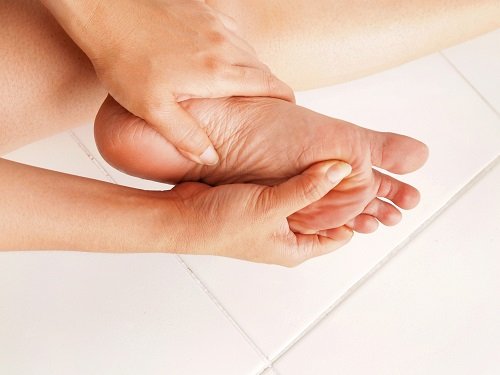BROOKLYN PODIATRIST DISCUSSES MELANOMA AND OTHER SKIN/NAIL PROBLEMS AFFECTING THE FEET
There are a multitude of different problems that might affect the skin & nails of your feet. These can be grouped into three categories: fungal conditions, inflammatory conditions, viral conditions and skin growths (malignant & benign).
Fungal conditions include Tinea pedis, most commonly known as Athlete's foot or skin fungus as well as Toe nail fungus. It thrives in moist, warm and dark areas. Fungus as well as bacteria are always present on our skin however certain conditions make these overgrow which creates signs and symptoms that are actually visible and can be termed as infection. This is the most frequent skin condition seen by podiatrists. Prevention methods include: keeping feet clean and dry, changing socks often, alternating shoes on a daily basis, control odor/perspiration with a foot deodorant or foot powder. Multiple treatments for nail fungus or onychomycosis include: topical and oral anti-fungal medications, debridement (cleaning/cutting/filing thick, painful toe nails) and laser treatment.
The second most common condition is a viral skin infection, i.e. Plantar warts. Plantar warts are caused by HPV Types 1, 2 and 4 (Human Papillomavirus). These virus are present in high numbers in moist, warm areas and can be transferred by direct contact from the skin of the infected individual as well as the surface containing the viral particles. Warts are usually painful, especially those present on the bottom of the feet tend to have a cauliflower-like, grainy appearance and can occur in clusters or single lesions. There are a number of treatment options available for wart eradication such as: salicylic acid, cryosurgery, laser treatments, various chemical applications, topical antiviral medications, oral supplements. Warts typically resolve on their own w/n a few months however they need to be treated as they can spread to other skin areas of the body.
Another common foot condition is Dermatitis. There are a few types of dermatitis that are commonly seen by a podiatrist: Atopical dermatitis, allergic dermatitis, dermatitis due to vein problems (venous insufficiency of the legs), allergic reaction due to insect bites. This condition causes redness, inflammation, crusting, fissuring, blistering, oozing and sometimes dryness of the skin area as well as itching. Usual management include steroid medications, topical calming over the counter creams, moisturizing lotions/creams, and also oral and topical preparations to manage allergic skin reactions.
Another skin problem seen by podiatrists but could be overlooked is Skin cancer. This is very important to consider as most patients seen by podiatrist are usually unaware that skin cancer can occur on the skin of the feet. Some people are born with moles or birthmarks that are considered benign (not cancer). However these still must be brought to the attention of the treating podiatrist as they can change over time. Pictures, measurements and other observations must be made during any routine podiatry visit if such a skin issue exists. The most common cancer found on the feet is Melanoma. It's more prevalent on the people with darker skin color but can occur in anyone. There are even melanomas that can grown under the nails.
The following are skin changes that can occur to the skin growth or mole that can indicate malignant (bad) changes. These are called the ABCDE's of Melanoma and are the Warning Signs of Skin Cancer.
Asymmetry. One half doesn't match the appearance of the other half.
Border irregularity. The edges are ragged, notched, or blurred.
Color. The color (pigmentation) is not uniform. Shades of tan, brown, and black are present. Dashes of red, white, and blue add to a mottled appearance.
Diameter. The size of the mole is greater than 1/4 inch (6 mm), about the size of a pencil eraser. Any growth of a mole should be evaluated.
Evolution. There is a change in the size, shape, symptoms (such as itching or tenderness), surface (especially bleeding), or color of a mole.
Any mole or skin growth that concerns you or seems to be undergoing any or all of the changes above must be examined and biopsied. A biopsy is when a doctor removes a piece or the entire skin growth and sends to a pathology lab to evaluate for skin cancer.
In conclusion I'd like to says that your Podiatrist is great resource of information when it comes to treating and diagnosing various skin conditions on the feet. Information above can serve a summary of commonly encountered skin conditions treated by Podiatrists.
Inna Verzub, DPM
Modern Podiatry P.C.

